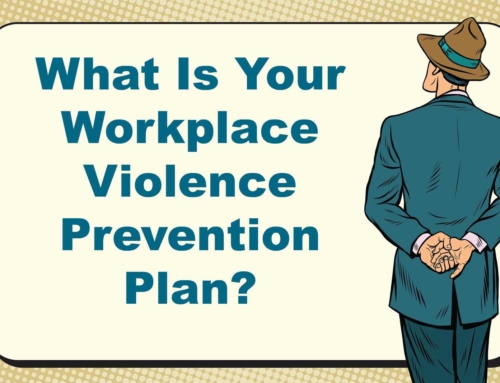Violence at Work a Dangerous Force in Today’s Hospitals
Violence at work continues to be an alarming phenomenon worldwide.
The real size of the problem is largely unknown due to significant under-reporting and the current research shows that the current knowledge is only the tip of the ice-berg.
The enormous cost of violence at work for the individual, the workplace and the community at large, is becoming more and more apparent. Violence includes both physical and nonphysical violence. It finds its expression in physical assaults, homicides, verbal abuse, bullying, sexual harassment and mental stress.
Violence is often defined differently in different social and cultural environments and violence at work is often considered to be just a reflection of the more general and increasing phenomenon of violence in many areas of society.
Its prevalence has, however, shown increasing impact in our workplaces which have traditionally been viewed as a violence free environment.
Research has shown though that workplaces historically suffered from routine underreporting of aggressive and violent incidents which provides a false sense of security and safety.
Today, employers and workers are equally interested in violence prevention in the workplace as we begin to see more and more incidents occur and then reported.
Violence occurs in all workplace environments. However, some sectors are particularly exposed to violence such as the healthcare sector and related social services.
Violence at Work and Healthcare
It is clear that for many years, healthcare and social service workers have faced a significant risk of job-related violence. Assaults represent a serious safety and health risk within these industries. Every jurisdiction has legislation and regulations regarding this serious workplace concern and the establishment of violence prevention programs is mandatory.
Although not every incident can be prevented, many can, and the severity of injuries sustained by employees can be reduced. The adoption of practical measures can significantly reduce this serious threat to worker safety.
However, there are several factors present in healthcare which create an increased risk of work-related aggression and assaults occurring.
These often include:
- The increasing number of acute and chronic mentally ill patients being released from hospitals without follow-up care
- The availability of drugs and cash at hospitals, clinics and pharmacies, making them likely rubbery targets
- The unrestricted movement of the public in clinics and hospitals and extended waits in emergency or clinic areas that lead to client frustration over an inability to obtain needed services promptly
- The increasing presence of drug or alcohol abusers, trauma patients or distraught family members
- Staffing levels during times of increased activities such as mealtimes, visiting times and when staff are transporting patients
- Isolated work with clients during examinations or treatment
- Working alone or in isolation with no backup or way to get assistance, such as communication devices or alarm systems
- Lack of training in recognizing and managing escalating hostile and assaultive behaviour
- Other physical safety risks such as poorly lit parking areas at night
Reducing the risk of workplace violence
Develop a policy:
The first step in reducing the risk of workplace violence is to develop a written antiviolence policy that clearly states “zero tolerance for violence.”
This policy, which must address employees, patients, nonhospital employee providers and visitor factors should include a statement that “this is a violence free workplace and no aggressive, violent behaviour will be tolerated.”
Enforcement:
Employers must enforce the zero tolerance of workplace violence policy.
All displays of violent behaviour should be handled properly and immediately. Further, violent outbursts often can be prevented when aggressive behaviour elicits quick and appropriate response to the initial behaviour.
Reporting system:
Employers must develop a reporting system and take prompt action when a report is made. The reporting system should include the creation of special forms to report aggressive and violent incidents as well as the establishment of a hotline and confidential procedures that encourage the timely reporting of threats, belligerence, and other inappropriate behaviour.
These are the very basics of an effective program regardless of whether the workplace is in the healthcare field or not.
However, a quick glimpse at the news, and you can see that not every healthcare environment has done what they need to just yet:
NEWS BRIEF #1
NEWS BRIEF #2
Let’s please learn from these headlines and make sure your own house (or hospital) is in order!
Everyone will thank you.







Leave A Comment